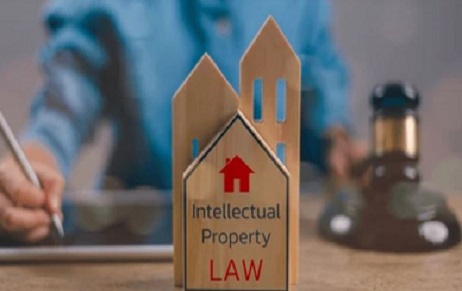In recent years, the world witnessed an exponential surge in the use of Artificial Intelligence…
Exploring The Intellectual Property Landscape Of 6g And Future Wireless Technologies: Patents, Data Privacy And Global Challenges
New paradigms in communication networks, promise ultra-fast connectivity, and ubiquitous artificial intelligence (AI) integration along with a more robust Internet of Things (IoT) ecosystem can be reasonably expected by the birth of sixth generation, 6G wireless technology. Straddled on the strong foundations of 5G, innovations such as terahertz frequencies, quantum computing, and ultra-massive multiple-input multiple-output (MIMO) systems will be envisioned by 6G.
This paper discusses the consequences of such technologies on intellectual property (IP), data privacy, and world regulatory regime.
ISSUES OF INTELLECTUAL PROPERTY IN ERA OF 6G
Accordingly, rapid technological development of 6G will definitely fuel a stampede for patents in nearly all industries, but most visibly in those related to communications, artificial intelligence, and even quantum computing. As such, it makes for a much complex intellectual property rights landscape that needs to be crossed by innovators, lawyers, and regulators alike.
SEPs AND FRAND ISSUES – As has happened with previous generations of wireless technologies, the growing number of SEPs is likely to be observed in the 6G landscape. SEPs are patents that are considered essential to the implementation of a technology standard, and, accordingly, patent owners must agree to license them on FRAND terms. However, determining what is “fair” and “reasonable” involved in licensing agreements often becomes an issue upon which patent owners and licensees disagree.[1]
The high stakes involved in 6G development make it likely that companies will aggressively seek to dominate in SEP filings, as this provides leverage over competitors through licensing fees. Disagreements over FRAND terms, as observed in numerous 5G-related lawsuits, will likely continue into the 6G era. In fact, analysts predict that patent thickets—overlapping patent rights held by different entities—could become even more pronounced, further complicating licensing negotiations.[2]
ROLE OF OPEN INNOVATION IN 6G RESEARCH AND DEVELOPMENT- The intricacy of the 6G technologies has seen researchers consider open innovation as the ‘way forward’ from patent thickets. Put simply, open innovation involves collaboration, sharing knowledge among players in various industries, and consequently diminishes the possibility of overlapping patents and faster development. This strategy, however, demands careful handling of IP rights in the protection of proprietary innovations from improper use but encourages shared progress.
DATA PRIVACY AND SECURITY CONCERNS IN 6G NETWORKS
Integration of AI and IoT with 6G networks is going to bring unprecedented levels of connectivity, yet it brings along new issues related to data privacy and cybersecurity.[3] In scenarios where terahertz communication facilitates higher data transfer rates and low latency for interaction, vast amounts of sensitive data will be transmitted over 6G networks. Data privacy and cybersecurity in such a setting is important.
AI AND ALGORITHMIC TRANSPARENCY – 6G networks, with their introduction of AI-based technologies in operation, raises questions about transparency and accountability of algorithms. Moreover, AI algorithms will be crucial in the control of network operations, predicting user behavior, and optimizing data flows. However, lack of transparency in AI decision-making procedures, such as “black box” algorithms complicates regulatory oversight. New regulatory frameworks will ensure that AI systems are transparent in operation, free from discrimination, and operate within the limits of privacy regulations.

PRIVACY IN THE IOT ECOSYSTEM – With the explosion of IoT devices in the 6G era, there will come an explosion in data generated, inclusive of data related to personal and location information. The risk of a breach and unauthorized access is highly probable.[4] Therefore, existing regulations regarding privacy, as implemented in Europe by way of GDPR, will have to be “tweaked” to fight off the new challenge that comes with 6G technologies. As data transmission volume and complexity increase, regulatory authorities must ensure that there are adequate safeguards for user privacy.
GLOBAL REGULATORY CHALLENGES FOR 6G
Harmonizing 6G standards throughout the world poses an enormous task due to the different legal, economic, and political environments of countries. Already, the geopolitics of 5G development have proven that problems can be expected while achieving global-level standards. Regulations are likely to be in fragments because countries will compete to claim technological supremacy in the 6G race.
GEOPOLITICAL COMPETITION AND FRAGMENTATION- Even in the standards of 5G, geopolitical competition between the United States and China has entered fragmented grounds as each nation seeks to push its adoption into foreign affairs with its own technologies and IP frameworks.[5] And this is going to be an even more fierce competition during the era of 6G because every nation would try to dominate the leader spots on AI, quantum computing, and other innovations. For example, China has presented many patents concerning 6G technologies, whereas the United States has been working on establishing standards all over the world by virtue of its power in international organizations like WIPO.[6] In addition, fragmented 6G standards threaten to undermine the feasibility of truly global networks. Regulatory bodies should work towards an agreement on cooperation that allows technological innovation without permitting competition as one that might build incompatible standards across regions.
ROLE OF INTERNATIONAL BODIES – International bodies, starting with the International Telecommunication Union (ITU) and WIPO, will also play a huge role in guiding all aspects of regulation of the 6G technologies.[7] International organizations can play a central role in fostering countries’ collaboration and promoting standardization over IP, data privacy, and cybersecurity frameworks. However, its effectiveness will be at the hands of the willingness of major technological powers to collaborate rather than compete.
INTELLECTUAL PROPERTY AND COMPETITION POLICY IN 6G
The intersection of IP and competition policy is one of the more important issues in the 6G era. The paramount concerns amidst the companies bidding for patents to dominate key technologies are that increasing monopolistic behavior will stifle innovation and limit the scope of competition. Regulatory authorities need to balance protection of IP rights against a requirement of a competitive market.
ANTI COMPETITIVE COLLUSION THROUGH ANTITRUST POLICY – The concentration of IP rights in the hands of a few hegemonic players may lead to monopolistic practices, especially in industries like telecommunication, where patents drive market leadership. To counter such tendencies, it will be important for antitrust regulators to monitor the 6G market so that intervention is made when necessary to not permit excessive control over SEPs to stifle competition.
COLLABORATIVE INNOVATION- Regulators can also provide an impetus to collaborative innovation with patent pools and cross-licensing, where firms are committed to share their portfolios for mutual gains.[8] This will not only avoid patent thickets but make the market dynamics more vibrant and competitive in nature.
PATENTS AND LICENSING IN THE 6G ECOSYSTEM
Licensing of patents in the 6G ecosystem is an important issue, one that concerns the monetizing of innovation and the wide diffusion of technology. Companies will need the ability to negotiate patent licensing in ways that can support 6G success but in ways that avoid legal maneuvers.
THE NEED FOR TRANSPARENT LICENSING AGREEMENTS – Because the 6G technologies involved will be highly complex, licensing agreements need to be very clear and transparent so that any future potential legal disputes could be avoided.[9] The licensing terms of companies must be specific, particularly for SEPs. Otherwise, expensive litigation may follow, as has already occurred in many 5G-related cases .
CROSS- BORDER LICENSING CHALLENGES – Cross-border licensing will become more relevant as the 6G technologies are in the process of being deployed. Companies have to deal with the discrepancy in IP laws between nations and ensure patents in every core market. That, of course, will have to come in conjunction with the efforts of international regulatory bodies to make the IP laws uniform and streamline a cross-border patent enforcement process.
CONCLUSION
The greatest helm in 6G will be technological progress, but equally a myriad of legal issues: from patent licensing complexity for solid data privacy regulation and geopolitical competition in standards to setting them; this is one of the most complex legal landscapes ever. Companies, regulators, and policymakers should approach the 6G era together for this technology to be deployed correctly-fostering innovation but without violating the rights of all stakeholders.
Whether on the horizon or not, with regard to being on the horizon, today’s laying of legal groundwork will shape the future of global wireless communications. Challenges related to intellectual property, data privacy, and global regulatory cooperation will be the ones to ask in the sense of how to ensure that 6G technologies are developed and deployed for the benefit of society at large.
Author: Sukhpreet Kaur Sodhi, in case of any queries please contact/write back to us via email to chhavi@khuranaandkhurana.com or at IIPRD.
[1] Patents and Pitfalls: Examining the 6G Landscape, Maxval, https://www.maxval.com/blog/patents-and-pitfalls-examining-the-6g-landscape/ (last visited Oct. 3, 2024).
[2] Nurul Huda Mahmood et al., Sixth-Generation (6G) Wireless Networks: Vision, Research Activities, Challenges, and Potential Solutions, Sci. Direct, https://www.sciencedirect.com/science/article/pii/S2352864820302431 (last visited Oct. 3, 2024).
[3] CUTS-CCIER, Understanding 6G Developments and Challenges, CUTS-CCIER, https://www.cuts-ccier.org/pdf/understanding-6g-developments-and-challenges.pdf (last visited Oct. 3, 2024).
[4] Understanding 6G: Vision, Challenges, and Technological Trends, DiVA Portal, https://www.diva-portal.org/smash/get/diva2:1571994/FULLTEXT01.pdf (last visited Oct. 3, 2024)
[5] Robert D. Atkinson et al., Intellectual Property and Competition Policy in Global Wireless Markets, Cambridge Core, https://www.cambridge.org/core/books/5g-and-beyond/intellectual-property-and-competition-policy-in-global-wireless-markets/D3B7792D751E5AE28B4F565317F9A6F3 (last visited Oct. 3, 2024).
[6] 5G Networks and Beyond: Intellectual Property and Global Challenges, WIPO, https://www.wipo.int/edocs/plrdocs/en/5g_networks.pdf (last visited Oct. 3, 2024).
[7] Stefanos Louvros & Haris G. Rigas, 6G Systems and Regulatory Frameworks, in 6G Wireless Networks, Springer, https://link.springer.com/chapter/10.1007/978-3-031-33191-6_7 (last visited Oct. 3, 2024).
[8] Response to NTIA RFC on 6G by Information Technology & Innovation Foundation, ITIF, https://www.itic.org/documents/telecommunications/20240820ITIFinalNTIA6GRFCComment.pdf (last visited Oct. 3, 2024).
[9] Mounir Hamdi et al., 6G Intelligent Networks: Vision and Regulatory Challenges, arXiv, https://arxiv.org/html/2407.09398v1 (last visited Oct. 3, 2024).



